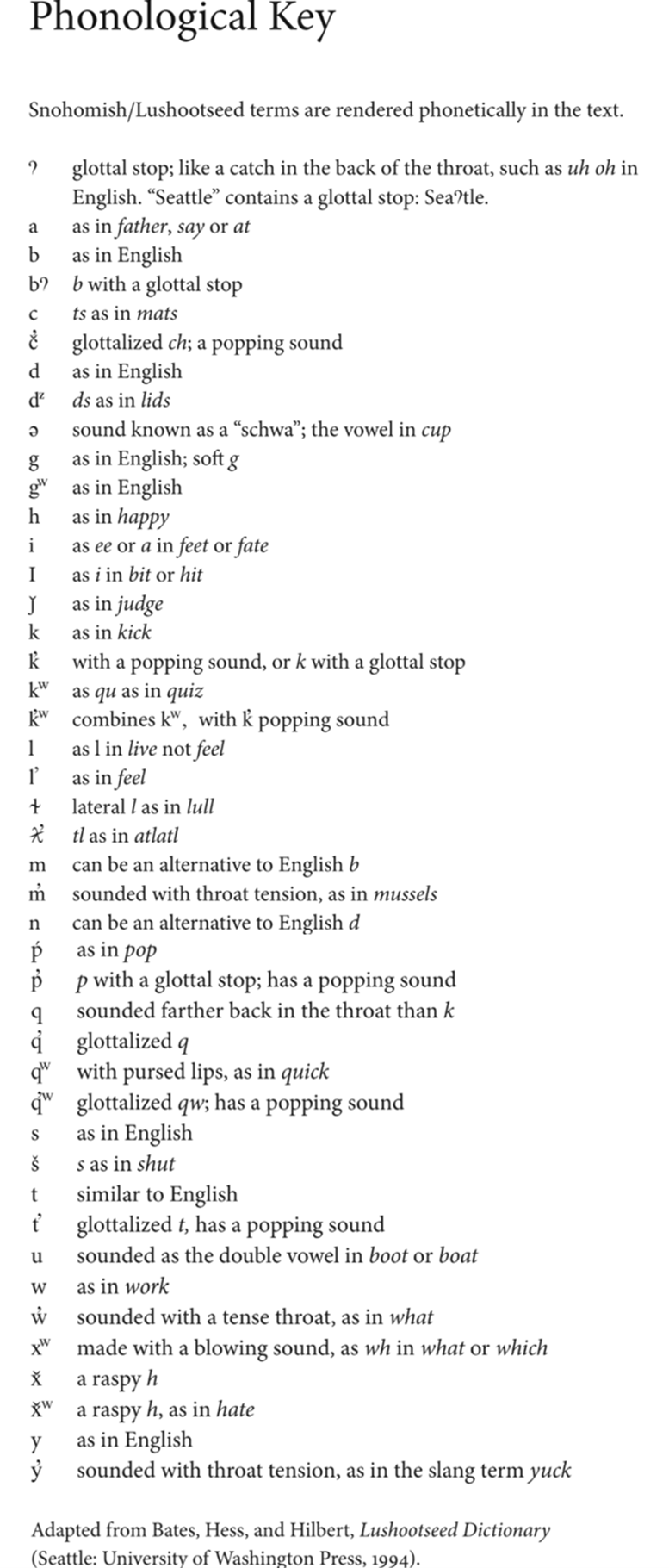Lushootseed [Dxʷləšucid] is Awake
The staff of the Lushootseed Language Department is working to expand traditional language curriculum within the Tulalip Tribes and share Lushootseed with children from a young age to keep the language alive.
Story and photo by Mikaela Keator
December 6, 2022
Friends and family are gathered in rows of foldable chairs and wooden benches on a sunny, late July day in Tulalip, Washington. Around 75 Tulalip kids file into the Kenny Moses Building, eager to share their new knowledge and performance with the audience. The kids just finished the weeklong Lushootseed Language Camp held every summer since 1996. This year was the 25th Annual Lushootseed Language Camp, the first back after two years, due to the COVID-19 pandemic. Over 120 kids participated in two camps, each one week long.
Each year at the camp, the Lushootseed Language Department offers a wide variety of activities to teach the kids about their culture, traditional stories and the Lushootseed language. There were several stations this year which wove together the teachings of the four seasons. Kids practiced Lushootseed vocabulary, heard traditional teachings, made weavings, sang traditional songs, played games like ‘hoop and stick’ and used electronic devices programmed with Lushootseed educational materials.
It’s quiet walking up to the Lushootseed Language Department located in the old Tulalip Elementary school building. The classrooms are empty, but sʔuladxʷ [salmon] and qal̕qaləx̌ič [orca] decorate the outside of the building leading toward the office door. It is located less than a mile away from where the Tulalip Indian Boarding School was located 100 years ago, where Native children were forbidden and punished for speaking their language, Lushootseed [Dxʷləšucid].
A qal̕qaləx̌ič is painted on the side of the department building.
In early 2022, the Federal Indian Boarding School Initiative released a report stating they had found evidence of 408 boarding schools across the United States between 1819 and 1969. At least 15 of these were in Washington state. Residential boarding schools, which started as Catholic missions, were developed by the government into weapons to assimilate Native children and eradicate Native culture. The goal of these schools was to “kill the Indian, and save the man."
The Lushootseed language spoken by many Coast Salish tribes was in jeopardy when Native children were taken to residential schools in the 1800s and 1900s. The boarding schools disciplined children, often in the form of physical violence, for speaking their language. Many never spoke Lushootseed again. This created a disconnect in the language being passed down to younger generations, so many tribal members don’t know how to speak their language today.
The Tulalip Tribes have spent the last 30 years formally teaching Lushootseed to tribal members in the aftermath of the closing of the Tulalip Indian Boarding School and other residential schools. The Lushootseed Language Department started to form in the early 1990s and began teaching in 1993. The goal of the department is to produce as many Lushootseed speakers as possible in their community.
“Our goal is to teach in as many classrooms as we can that have the most Tulalip students in it,” said Michele Balagot, who started in the Lushootseed Language Department in 1997 and has managed the department since 2005.
The department currently has 17 employees who work within the department and teach Lushootseed at six different schools ranging from early learning to college. At Marysville Pilchuck High School, they reintroduced Lushootseed classes in 2019. Since the reintroduction, the two classes are often full and have waitlists.
At Betty J. Taylor Early Learning Academy in Tulalip, they have 14 classrooms for infants and toddlers and nine classrooms for kids aged three to five years old. Jasmyne Diaz, a teacher for children under four years old at the early learning academy, spoke about the benefit of being able to work with kids that are first learning to speak.
“We can just teach them straight Lushootseed, off the bat, and that’s all they’re going to hear,” said Diaz. “It’s better for them to recognize x̌payʔac means that’s a cedar tree, but they don’t know the word cedar tree, they can figure it out from anyone that that’s a cedar tree, but they will know it as x̌payʔac first.”
Teaching Lushootseed to students in the classroom has had a ripple effect as the students share what they’ve learned at home.
“Even if the parents aren’t speaking [Lushootseed], when their kids come home, and they’re singing a song or they are saying words, it makes the parent think, ‘Oh man, my kids know this and I don’t know this so I’m going to have to catch up,’” says Diaz.
The department would often get calls from parents, who were curious about what their kids were saying in Lushootseed, which motivates the parents to want to learn. Hearing the language and normalizing its use with children and within the home is important to the department as they want to be a speaking community.
“I teach a conversational curriculum at Heritage [High School], where they’re speaking. [I’m] just hoping that they bring it home and embrace it, and their parents or whomever’s in their household will pick it up,” said Michelle Myles, a Lushootseed language teacher at Heritage High School.
Myles has been a part of the department for over 20 years. She has taught at Heritage High School for the last six, where she has been working on fun ways to engage the high schoolers. If the students use their phones, they must text in Lushootseed, and they have even come up with slang words for the teens to use.
However, even with the number of schools the language department is able to reach, the department still struggles with being short staffed as many tribal members today don’t know the language well enough to teach it . This is a repercussion of the Tulalip Indian Boarding School, as well as other residential schools in the U.S. during the 1800s and 1900s, which left Native children unwilling to speak their languages.
After a fire burned down one of the original Tulalip mission schools in 1902, the U.S. government established the Tulalip Indian Boarding School, which closed in the 1930s. Children as young as six were sent to the school. Elders, who were only children when they went to the residential school, were hesitant, and some were unwilling to speak their native language after leaving the schools due to the trauma they endured.
Harriette Shelton Dover was just seven years old when she was sent to the Tulalip Indian Boarding School, where she was forced to learn English and was whipped by the staff when heard speaking Lushootseed. Her experience was documented in the autobiography, “Tulalip, From My Heart”, before she passed away in 1991.
She describes an instance in which she was caught speaking Lushootseed.
“The matron strapped us from the back of our necks all the way to our ankles for talking in our own language, and I mean she laid it on,” Dover wrote. “Believe me, we never talked ‘Indian’ at the school again”.
It was experiences like Dover’s where the language “was beaten out of [them]” which led elders to seldom speak the language. This created a significant linguistic knowledge gap.
“We have elders that speak, but we don't know how many actually really know the language. And because they went to the boarding school, they don't want to speak it. So, we do have fluent speakers, but we just don't know how many,” said Balagot. “And if we don't carry it on, then I don't know. This is a part of our culture. This is a part of who we are and if we lose that, it's devastating.”
Balagot said her grandmother went to a boarding school, so she never spoke the language and therefore neither did her parents. So, when Balagot started at the department, she didn’t know Lushootseed and had to learn the language while being a teaching assistant.
Not knowing the language is common for new staff members when first starting at the Lushootseed Language Department and it’s one of the biggest struggles the department faces. They are always looking to hire more Lushootseed teachers but often, new hires find the first year to be too difficult. Without knowing the language, new hires have to take Lushootseed 101, 102 and 103 while simultaneously teaching students in the classroom.
In the last few years, the Lushootseed Language Department staff has grown. In fact, one of Myles’ students who graduated from Heritage High School works at the department now. They hope to continue this trend in the coming years. Balagot said that they are always trying to recruit students. They want to see their language being taught and hope that students will feel called to come back and teach once they are finished.
The department has incredible momentum with a bigger staff and a variety of community events. They have an extensive website with many resources. The department’s website features information on community events, and offers fun educational activities including stories for kids, lessons on the alphabet and words, everyday phrases and more. A few of their events include Lushootseed family nights and summer language camps, which they use to share the language beyond the classroom. All of their events have great turnouts. Even during the COVID-19 pandemic, they held community lessons over Zoom to make sure people were still engaging with the language.
“With the work that we’re doing here, I’m just hoping that the language doesn’t die,” said Balagot.
The possibility of extinction is not uncommon for Native languages in the United States as the result of residential boarding schools and assimilation. There are Native groups across the U.S. who are engaging in the same work as the Lushootseed Language Department. Educators within the Yurok Tribe in California are training preschool through high school teachers in their native language. The Hupa Tribe have all of their teachers attending language classes together and have Hupa language teachers in elementary and high schools. Also, the Mashpee Wampanoag Tribe in Massachusetts had to conduct extensive research to welcome the language home after the last fluent speakers of Wôpanâak passed away.
Indigenous tribes across the U.S. have created a movement to reawaken their Native languages. The Tulalip Lushootseed Language Department is just one example of the amazing work being done within Native communities.
“The language is awake; it’s no longer asleep,” Myles said. “Because [saying] ‘revitalization’ is so different, I don’t think that’s the word we should use. It was a language that was almost asleep, that has been passed down; but it’s alive, it’s being spoken. It seems to me that it’s awake.”
A Lushootseed pronunciation key.
Mikaela Keator is a senior at Western majoring in environmental studies and law, diversity, and justice and human rights law. She has focused on environmental justice issues for much of her studies.


